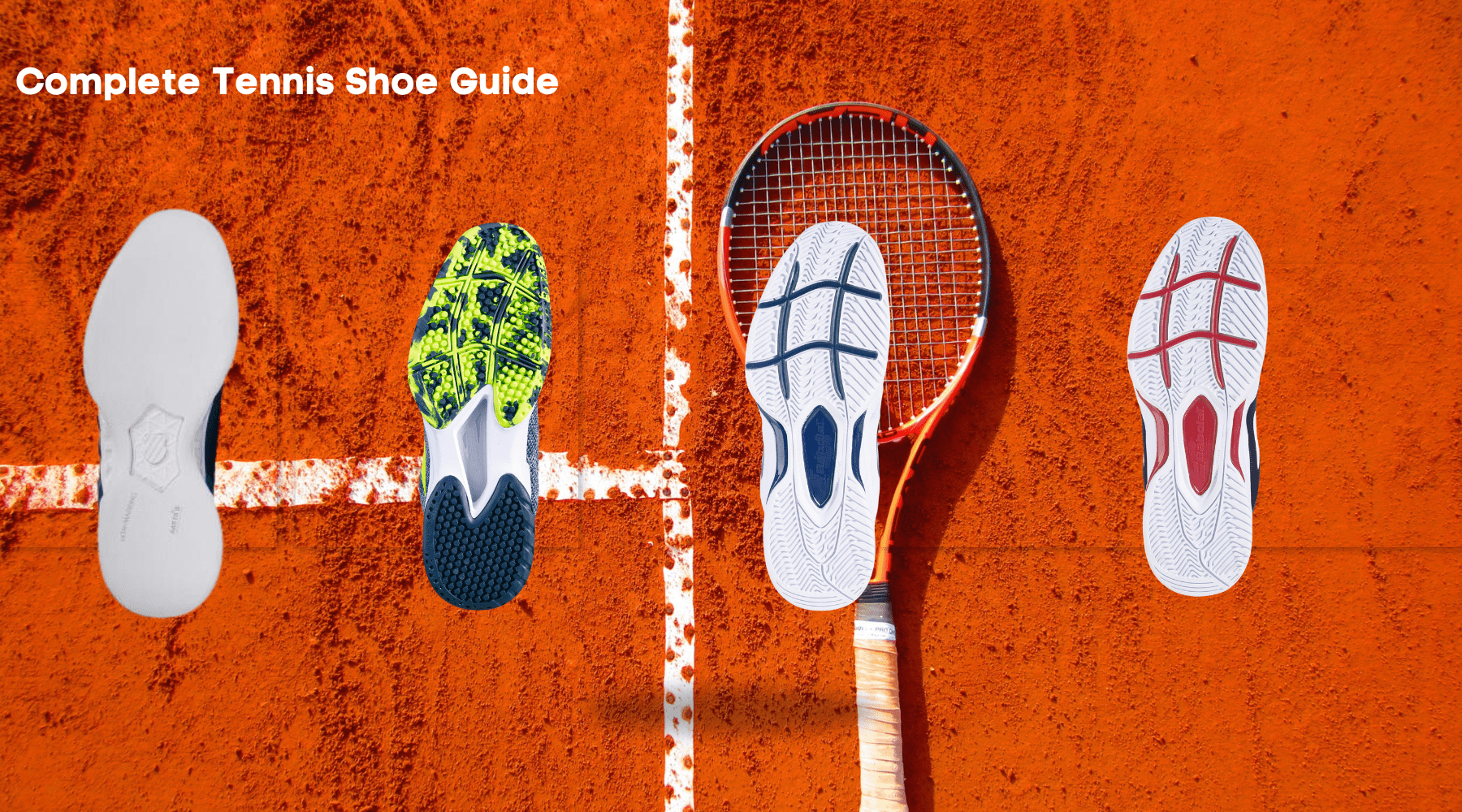Finding Your Perfect Match: The Different Types of Tennis Shoes Explained
Choosing the right tennis shoe is crucial for maximizing performance, comfort, and injury prevention on the court. With so many options available, finding the perfect pair can be overwhelming. In this step-by-step guide, we'll help you navigate the process of selecting the ideal tennis shoe based on your individual needs, playing style, and court preferences.
Step 1: Determine Your Court Surface Preference
The type of court you predominantly play on will significantly influence your choice of tennis shoe. The main court surfaces are hard, clay, and grass, each requiring different levels of traction, support, and durability. Identify the type of court you'll be playing on most often and choose a shoe designed for that specific surface.
Read our detailed guide here on choosing the right shoe for different surfaces.
Step 2: Evaluate Your Playing Style
Your playing style is another essential factor to consider when choosing a tennis shoe. Are you an aggressive baseliner, a serve-and-volley player, or an all-court player? Aggressive baseliners may require more durable shoes with enhanced lateral support, while serve-and-volley players might need a shoe with a reinforced toe cap for better protection during frequent net approaches.
Step 3: Know Your Foot Type
Understanding your foot type is crucial for selecting a shoe with the proper support and cushioning. There are three main foot types:
- Neutral or normal arch: A well-balanced foot that requires a shoe with moderate support and cushioning.
- Flat feet or low arch: A foot that tends to overpronate (roll inward) and needs a shoe with added stability and motion control features.
- High arch: A foot that underpronates (rolls outward) and requires a shoe with extra cushioning to absorb shock.
You can determine your foot type by conducting a simple wet test at home or consulting with a specialist at a running or sports shoe store.
Step 4: Choose the Right Fit
Finding the right fit is critical for comfort and performance on the court. When trying on tennis shoes, consider the following factors:
- Length: There should be about a thumb's width between your longest toe and the end of the shoe.
- Width: The shoe should fit snugly but comfortably, without pinching or causing discomfort.
- Heel: Your heel should be firmly secured in the shoe, with minimal slippage during movement.
- Flex: The shoe should flex naturally at the ball of the foot, mirroring the foot's movement.
Step 5: Consider the Shoe's Key Features
Evaluate the following features when choosing your tennis shoe:
- Upper: Look for materials that provide a balance between support, durability, and breathability.
- Midsole: The midsole should offer ample cushioning and shock absorption, while also providing stability and support.
- Outsole: The outsole should provide the appropriate level of traction for your preferred court surface, as well as being durable enough to withstand regular play.
- Toe Protection: Reinforced toe caps or guards can offer added durability for players who frequently drag their toes.
- Weight: Lighter shoes can enhance speed and agility, while heavier shoes may offer more cushioning and support.
Step 6: Set a Budget
Determine a budget for your tennis shoes and look for options that provide the best balance of quality, performance, and price. Investing in a quality pair of tennis shoes can pay off in the long run by providing better support, comfort, and durability.
Conclusion
By following this step-by-step guide, you'll be well-equipped to choose the perfect tennis shoe tailored to your court surface preference, playing style, foot type, and desired features. Remember that everyone's feet and preferences are different, so don't be afraid to try multiple pairs and brands
Check out our range of tennis shoes and our best-sellers such as K-Swiss and Babolat.






